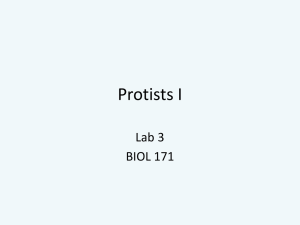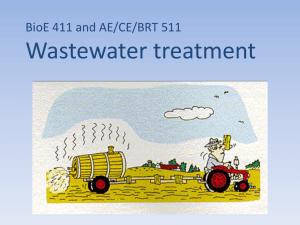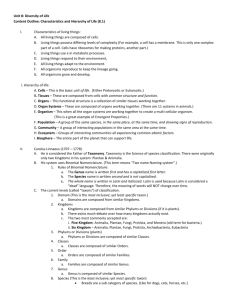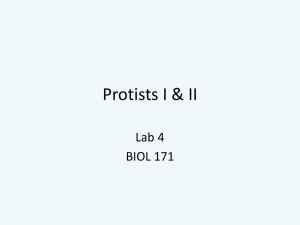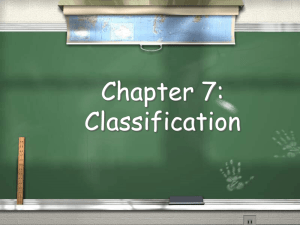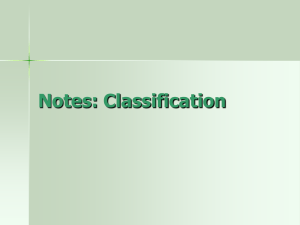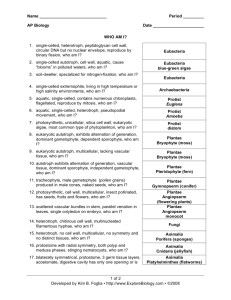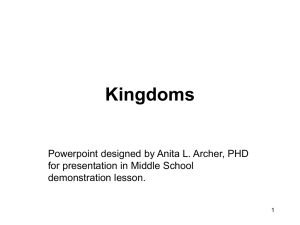Lab 3 – Protists 1 - How Biology Works
advertisement
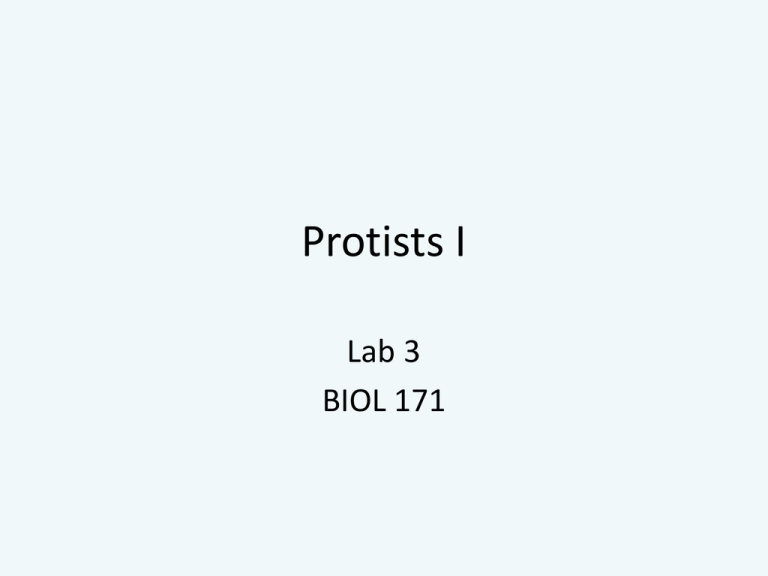
Protists I Lab 3 BIOL 171 Remember!: Classification System We’ll be looking at all of these! Ancestral Eukaryote Protists are everywhere in Eukarya! “the junk drawer of the eukaryotes” THIS WEEK We’ll be looking at all of these! Ancestral Eukaryote Protists are everywhere in Eukarya! “the junk drawer of the eukaryotes” Old School: 6 Kingdoms • • • • • • Plants (Plantae) Animals (Animalia) Fungi (Fungi) Eubacteria Archaeabacteria Protista A constantly changing system… Linnaeus[5] Haeckel[6] (1735) (1866) 2 kingdoms 3 kingdoms Animalia Vegetabilia Chatton[7] (1925) 2 groups Animalia Plantae Eukaryote Copeland[8] Whittaker[2] Woese [9][10] (1938) (1969) (1977,1990) 4 kingdoms 5 kingdoms 3 domains Animalia Animalia Plantae Plantae Protoctista (not treated) Protista Prokaryote Monera Fungi Eukarya Protista Monera Archaea Bacteria This week.... 1 A & B: Euglenozoans Trypanosoma levisii Euglena (alive and prepared) 2 A: Stramenopiles Diatoms (living) Diatomaceous Earth Brown Algae Ectocarpus (living) Sphacelaria (living) Fucus (preserved) Laminaria (preserved) Sargassum (preserved) Water mold Saprolegnia (prepared) Pro-tip: - Write these down. - Circle exercises in your manual. 2 B: Alveolates Paramecium caudatum (living) Peridinium (dinoflagellate, living) Other random dinoflagellates 2 C: Rhizarians (Foraminiferans and Radiolarians) - prepared Lab Study 1 A & B: Euglenozoans – Trypanosoma levisi (prepared slide) – Euglena (make wet mount) Trypanosoma and red blood cells Euglena Lab Study 2 A: Stramenopiles Diatoms (Bacillariophyta) – make wet mount Also observe diatomaceous earth (the cell wall deposits from diatoms) – make wet mount and look at prepared slides Diatom diversity Diatom cell wall made of silica Stramenopile flagella WHY do they have two? Why might they be different? Is it an adaptation? What is the function? Brown Algae (Phaeophyta) Living: Ectocarpus and Sphacelaria Preserved: Fucus, Laminaria, Sargassum Water mold Lab Study B: Alveolates Ciliate: Paramecium caudatum – (wet mount) in manual Dinoflagellates: mixed dinoflagellates (live & wet mount), and Peridinium (wet mount) not in manual Paramecium structures Dinoflaggelates Lab Study 2 C: Rhizarians • Foraminiferans - prepared slides Radiolarians - prepared slides Think about… • • • • • • Morphological characteristics Ecology of the organism How does the organism get around? What role do they play in the ecosystem? Do they have any economic value? Where do they live? • Don’t know the answer?? It’s probably a great research question! Ask me about it.
